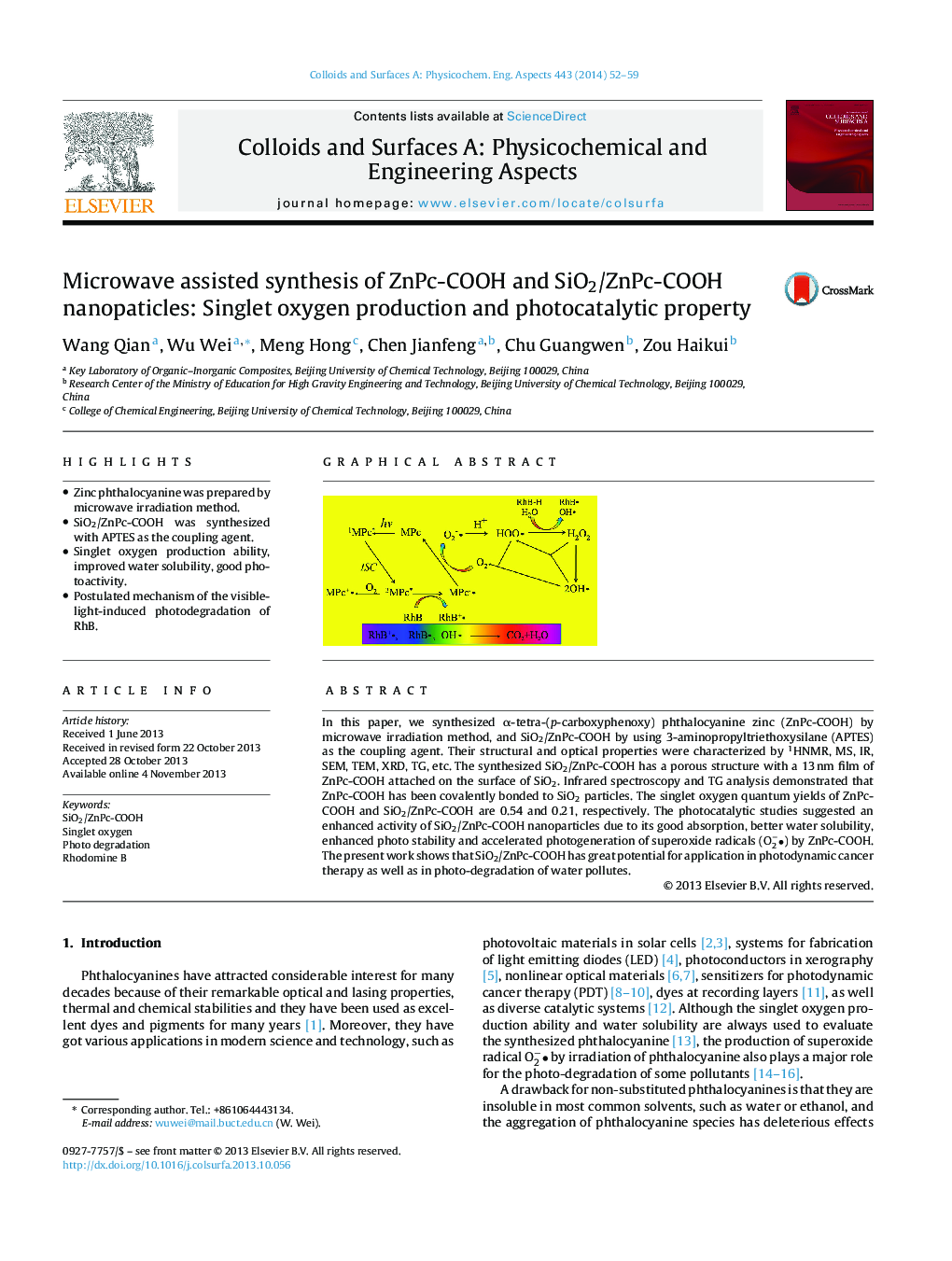| Article ID | Journal | Published Year | Pages | File Type |
|---|---|---|---|---|
| 592965 | Colloids and Surfaces A: Physicochemical and Engineering Aspects | 2014 | 8 Pages |
•Zinc phthalocyanine was prepared by microwave irradiation method.•SiO2/ZnPc-COOH was synthesized with APTES as the coupling agent.•Singlet oxygen production ability, improved water solubility, good photoactivity.•Postulated mechanism of the visible-light-induced photodegradation of RhB.
In this paper, we synthesized α-tetra-(p-carboxyphenoxy) phthalocyanine zinc (ZnPc-COOH) by microwave irradiation method, and SiO2/ZnPc-COOH by using 3-aminopropyltriethoxysilane (APTES) as the coupling agent. Their structural and optical properties were characterized by 1HNMR, MS, IR, SEM, TEM, XRD, TG, etc. The synthesized SiO2/ZnPc-COOH has a porous structure with a 13 nm film of ZnPc-COOH attached on the surface of SiO2. Infrared spectroscopy and TG analysis demonstrated that ZnPc-COOH has been covalently bonded to SiO2 particles. The singlet oxygen quantum yields of ZnPc-COOH and SiO2/ZnPc-COOH are 0.54 and 0.21, respectively. The photocatalytic studies suggested an enhanced activity of SiO2/ZnPc-COOH nanoparticles due to its good absorption, better water solubility, enhanced photo stability and accelerated photogeneration of superoxide radicals (O2−•) by ZnPc-COOH. The present work shows that SiO2/ZnPc-COOH has great potential for application in photodynamic cancer therapy as well as in photo-degradation of water pollutes.
Graphical abstractFigure optionsDownload full-size imageDownload as PowerPoint slide
